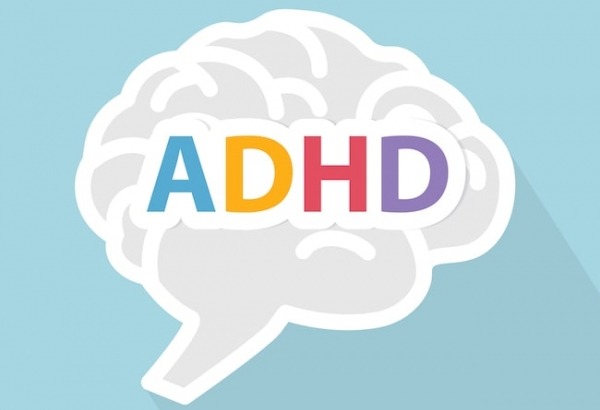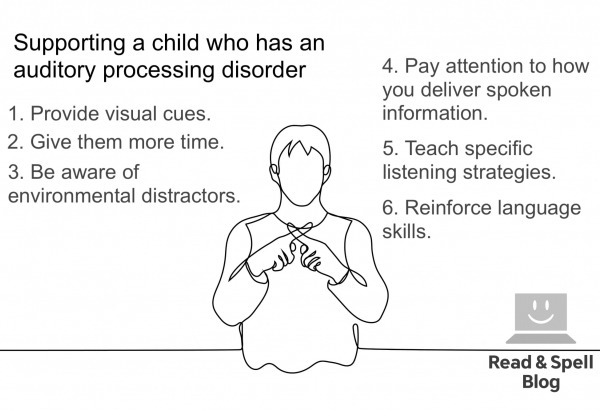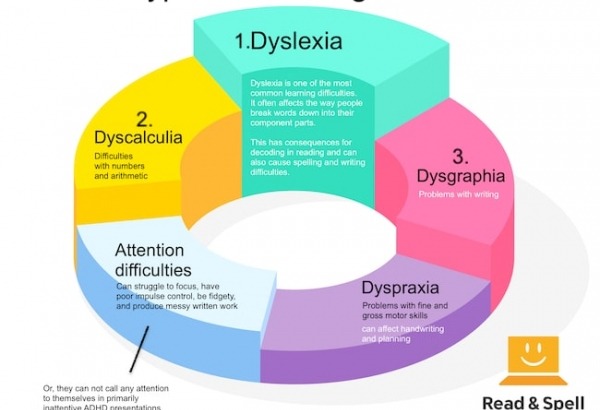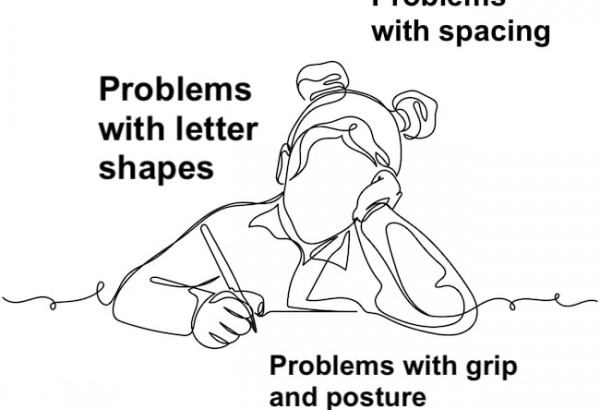ADD vs ADHD

Many educators have worked with bright and motivated children who struggle to perform at school due to attention difficulties. This is not unusual given attention difficulties are among the most common childhood behavioral disorders (1).
But if you are confused by the terminology surrounding attention difficulties, especially ADD vs ADHD, you’re not alone. So, what’s the difference?
From ADD to ADHD
The first thing to know is that they changed the name. In the early and mid 1980s, ADD, or attention deficit disorder, was the accepted way of referring to attention difficulties. This is because ADD was the label used by the American Psychiatric Association (APA) who specified two variants, ADD with or without hyperactivity.
However, this changed in 1987 when the APA made ADHD, or attention deficit hyperactivity disorder, the accepted umbrella term. Then in 1993, they further refined the nomenclature and began discussing three types of ADHD, a predominantly inattentive subtype, a predominantly hyperactive-impulsive subtype, and a combined subtype. The current terminology in the US reflects a 2013 update in which the APA replaced the word subtype with presentation.
In the UK, the situation is slightly different. Online resources from the NHS state that ADHD can include two different kinds of behavioral problems: inattentiveness, and hyperactivity and impulsivity. Yet, they also mention that when inattentiveness presents on its own, it is known as attention deficit disorder or ADD.
It’s relevant to consider how individuals who have a predominantly inattentive presentation prefer to be referred to as well. Many dislike the ADHD label and prefer ADD because they feel the H for hyperactivity does not accurately describe them.
Which presentations of ADHD are most visible?
Teachers tend to be more familiar with the hyperactive-impulsive or combined presentations of ADHD. That’s because the symptoms are easier to spot in students. Children with these forms of ADHD often struggle to control their impulses, are fidgety, and prone to outbursts. These kids may need to move about regularly, have difficulty in social interactions with peers, and experience behavioral problems that can lead to frequent disciplinary action.
It is a commonly held belief that the hyperactive-impulsive presentation is characterized primarily by movement issues, but some specialists consider impulsivity to be the key difference (2).
People with a predominantly inattentive presentation or ADD call less attention to themselves. These are students who appear to be paying attention in class. They can be quiet and have few interactions with teachers.
Symptoms of inattention include having difficulty getting started on tasks, making careless errors in written work, and losing focus during lessons or readings.
Because children with an inattentive presentation or ADD display less obvious symptoms, it is more common for their learning difficulty to go undiagnosed, which can have a negative effect on a child’s confidence and self-esteem. This is especially the case when poor performance is attributed to “not trying” or “low effort” instead of an attention disorder.
What else do we know about ADHD?
It runs in families. In a national survey conducted in the United States in the early 2000s, researchers found predominantly hyperactive-impulsive or combined presentations of ADHD were diagnosed more often in boys aged 8 to 15 than in girls (3). In fact, the Attention Deficit Disorder Association points out "ADHD [in] women is consistently under-diagnosed [and] under-treated compared to men, especially those who do not demonstrate hyperactivity and behavior problems."
Experts have also noted mixed evidence as to whether the predominantly hyperactive-impulsive and combined presentations of ADHD are more common than ADD; some studies point to higher rates of children with symptoms of inattention without hyperactivity (4).
What do all presentations of ADHD have in common?
A student with attention issues will have difficulty focusing during a lesson or task. They can struggle with reading comprehension. This makes it more likely that they miss important information and perform poorly on quizzes and exams. Teachers may notice a gap between the child’s written and spoken vocabulary. Planning skills and time management are often weak, and students might experience problems understanding instructions.
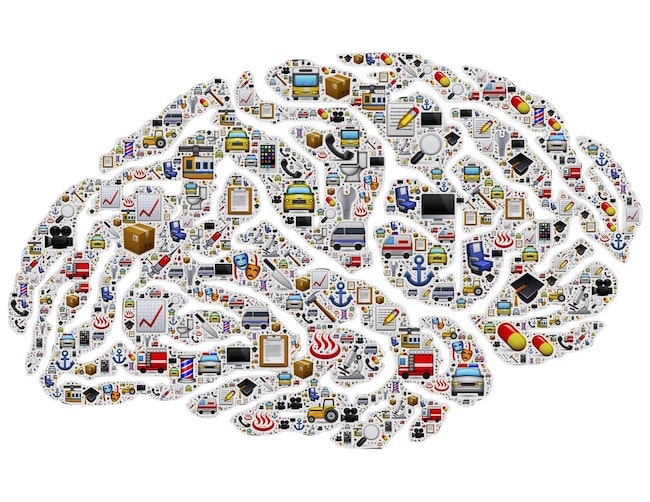
The ADHD brain
Attention based learning difficulties are not a myth, but a valid condition explained by structural differences in the brain. A 2017 study involving children and adults with ADHD used MRI scans to compare the brains of 3,200 participants with and without attention disorders (5). Researchers looked at brain volume in five regions and found significant differences in size, which were more prominent in children with ADHD.
The study focused on regions in the basal ganglia, a part of the brain which helps to control emotion, movement and thinking. Researchers also looked at how the brain signals emotional satisfaction as a reward for completing tasks. Results suggested satisfaction may be weaker in people with ADHD, which has implications for how individuals experience motivation. They also found specific executive functioning patterns in ADHD brains, which affect how individuals process and prioritize information in cognitive tasks.

Learn more about the symptoms
When educators are familiar with the symptoms of inattention, impulsivity, and hyperactivity, they can help children and adults with ADHD gain access to the accomodations and strategy training they need to achieve their full potential at school. Here's a list of symptoms (6) to look out for. Note, every child is different and no two individuals with ADHD will have the same set of symptoms.
Symptoms of inattention:
-Easily distracted
-May be forgetful
-Struggles to get started on a task
-Appears not to be listening
-Loses interest quickly
-Has trouble concentrating
-Experiences high levels of anxiety
-Misplaces objects and assignments
-Problems with self-organization
-Mood fluctuations
-Low self-esteem
-Difficulty sleeping
Symptoms of impulsivity and hyperactivity:
-Interrupts teacher and/or classmates
-Overly talkative
-May speak loudly and with a lot of passion
-Excessively fidgety
-Always seems to be moving
-Trouble with sitting still, especially for long periods
-Struggles with patience
Learn more about a predominantly inattentive presentation of ADHD, also known as ADD, in this article. You might also be interested in this article on how to recognize the symptoms of attention difficulties in adults.

9 Tips for teachers managing attention difficulties in the classroom
Children with different presentations of ADHD have a lot in common. This means they can benefit from some of the same accommodations.
- Avoid singling kids with ADHD out. Children with ADHD may need a teacher to remind them to focus at times, but it doesn’t help to shout out their name and call the rest of the class’s attention to the fact that a student is not on task. Instead, agree on a hand signal that you can subtly slip in without interrupting the lesson you might be delivering. This can even be a hand symbol the child chooses. In this way, you’ll avoid attracting extra attention from peers and still be able to connect with the child to help them stay focused when you notice they are straying.
- Spend extra time on task instructions for the whole group. Children with ADHD may be tempted to rush into a task if you hand out materials too soon. Make sure they are focused on you when you introduce an activity and not distracted by any papers or screens in front of them. It’s also advised you break directions down into steps and go over them one at a time when a task is complex. This can prevent children with a predominantly inattentive presentation or ADD from feeling overwhelmed and can help them stay on task. If possible, provide instructions in writing, go over them verbally, include illustrations and model any aspects that can be demonstrated.
- Approach group work with care. Because children with hyperactivity and impulsivity can sometimes have difficulty interacting with their peers, it’s important to plan ahead. Think carefully about the group dynamics and personalities of the students in your class and take care to always assign students with ADHD an appropriate partner. If you prefer to allow the class to self-organize, make sure two students with ADHD are not in the same group and try to pair a child with a predominantly inattentive presentation or ADD with a student who will engage him or her.
- Create a distraction-free space in your classroom. Educators are often encouraged to create a stimulating classroom environment with plenty of dynamic text displays and colorful images tacked up on the wall. This is a great way to help engage learners but it can also be very distracting for kids with ADHD. Create a corner where there is less to look at and ensure students who have been diagnosed with ADHD are not sitting next to a loud window, air conditioner, fan, heater or anything else that could become a noisy distraction.
- Deliver more ADHD friendly lessons. Shorter lessons, particularly when they involve student participation and opportunities for movement, can be particularly helpful for students. Try to keep presentations interactive and avoid any one activity that lasts longer than 15-20 minutes. If a child with ADHD needs to get up and move around, have the whole class join them and introduce it as a valid part of the lesson. Many things that benefit a child with ADHD can also help the rest of your students maintain focus during a lesson. TIP: It can help to brainstorm a list of possible kinesthetic activities beforehand so you don’t always rely on the same one. Learn more about the benefits of multi-sensory learning.
- Prepare students for learning. Involve starter activities that prepare students for the main lesson and help a child with ADHD invest in a task by connecting to the information beforehand. As opposed to their peers, students with hyperactivity and impulsivity may not always be ready to switch from one topic to another. However, if you can get them to engage with the new material, they have a much better chance of learning from the lesson. This is also true of students who don’t struggle with attention difficulties.
- Encourage active reading and note-taking. Students with ADHD can benefit from learning how to annotate texts and write their reactions and thoughts in the margins. This is a great way to harness and redirect energy in the form of a tactile activity. Whereas they may be on guard about their writing, fearing low grades for spelling, students should be informed that making notes during reading is an informal process. You may also want to teach children with hyperactivity and impulsivity to incorporate movement while reading, such as running a ruler down the page. For chapter books, make charts of main characters and events to facilitate reading comprehension.
- Teach touch-typing to strengthen vocabulary. A touch-typing program is a great way to enhance the written vocabulary of a child with ADHD, as it will require typing repetition. This automatizes spelling and makes it more likely the child will use the learned words in free writing. A multi-sensory approach like the one taken by Touch-type Read and Spell can facilitate reading as well. Moreover, writing on a computer is especially suited to children with ADHD who often turn in messy handwritten work. Typing allows them to present a clean printed assignment to the teacher and avoid any shame or embarrassment associated with mistakes and erasure marks.
- Have one on one meetings at a scheduled time. Instead of expecting your student to open up to you while their peers are still filtering in and out of the classroom, schedule regular sessions to discretely check in on their learning. You may or may not want to involve parents in the discussion. It helps to get to know your students so they feel supported and are aware that you understand and are willing to help meet their needs.
If you found this list helpful, you may also be interested in these articles:
6 Blogs to follow on ADHD, ADHD reading problems, Dyspraxia vs. ADHD
Selecting the right tools
Fidget spinners may be all the rage for students with ADHD but they don’t do much for children with a predominantly inattentive presentation or ADD who don't have symptoms of hyperactivity. They also aren’t directly supportive of a student’s learning. However, there are plenty of educational programs that you can recommend to kids with attention difficulties, particularly when it comes to supporting children at home. When evaluating an app, look for multi-step tools that provide plenty of automatized feedback.
Fun and stimulating programs work best, particularly if they build on content covered in class. You might suggest apps as a way to supplement homework. For example, a class assignment could involve reading some pages from the book and then answering a set of questions. A child with ADHD will likely benefit from starting with a vocabulary game or typing exercise to activate the relevant words and topics and enhance reading comprehension.
Touch-type Read and Spell
Touch-type Read and Spell is a typing program that supports literacy skills development. Unlike the majority of typing programs available, it focuses on accuracy over speed and teaches typing, spelling, decoding and phonics through a streamlined and distraction-free interface. Students set the pace of learning and can repeat lessons as often as is needed. They can work on lessons individually, in class, or with the support of a private tutor.
Over time, spelling and reading skills improve, which strengthens a child’s confidence and self-esteem. Typing also facilitates written production!
Share your tips with us
Do you have experience teaching children with ADHD? Which symptoms did you first notice and how were you able to distinguish between the different presentations? Which classroom practices have you adopted to help students who struggle with attention issues in the classroom? We look forward to hearing from you.
References
1) National Collaborating Centre for Mental Health (2009). Attention deficit hyperactivity disorder: diagnosis and management of ADHD in children, young people and adults. National Clinical Practice Guideline Number 72.
2) Carlson, C.L. (1986). Attention deficit disorder without hyperactivity. In Lahey B.B. & Kazdin A.E. (Eds) Advances in Clinical Child Psychology, 9, Boston MA: Springer.
3) Froehlich, T. E., Lanphear, B.P., Epstein, J. N., Barbaresi, W. J., Katusic, S.K., Kahn, R. S. (2007). Prevalence, recognition, and treatment of attention-deficit/hyperactivity disorder in a national sample of US children. Pediatrics and Adolescent Medicine, 161(9), 857-864.
4) Wilens, T. & Spencer, T. (2010). Understanding attention-deficit/hyperactivity disorder from childhood to adulthood. Postgraduate Medical Journal, 122(5), 97-109.
5) Hoogman, M., Bralten, J., Hibar, D., Mennes, M., Zwiers, M., Schweren, L. et al (2017). Subcortical brain volume differences in participants with attention deficit hyperactivity disorder in children and adults: a cross-sectional mega-analysis. The Lancet, 4(4), 310-319.
6) Kewley, G. & Halliwell, N. (2014). Attention deficit hyperactivity disorder: clinical update. British Journal of General Practice, 64(621), 243-245.
For learners who struggle with attention difficulties
TTRS is a program designed to get children and adults with attention difficulties touch-typing, with additional support for reading and spelling.
Chris Freeman

close
Can an Orton-Gillingham approach to literacy help your child?
Take a short quiz to find out!
TTRS has a solution for you
An award-winning, multi-sensory course that teaches typing, reading and spelling

How does TTRS work?
Developed in line with language and education research
Teaches typing using a multi-sensory approach
The course is modular in design and easy to navigate
Includes school and personal interest subjects
Positive feedback and positive reinforcement
Reporting features help you monitor usage and progress







